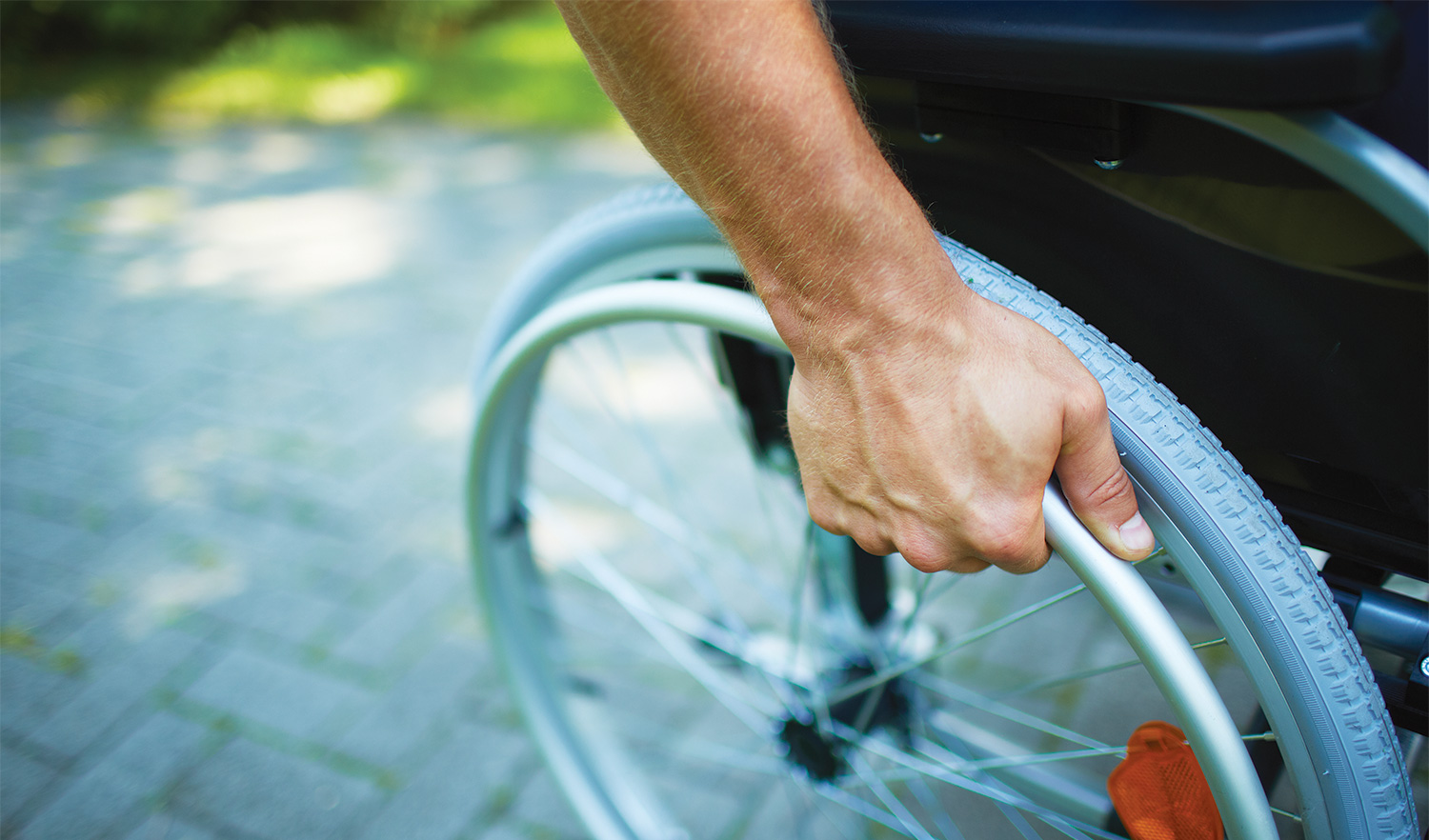Accidents that result in a spinal cord injury can be scary stuff. The spine is made up of vertebrae and depending on the location of the injury there can be life changing effects, like losing the ability to walk or use other parts or functions of the body all together. Generally, injuries have a greater severity and dysfunction tends to occur the higher up the injury is on the spinal cord.
The spine is split into 3 levels; the lower back containing lumbar and sacral nerves, the thoracic nerves in the mid-back and the upper back with the upper and lower cervical nerves. These are some of the outcomes that can be expected if a spinal cord injury is sustained.
Lumbar nerves (L1 – L5)
- Often, insured parties suffer from loss of function in their hips or legs.
- There is limited or no voluntary control over the use of the bladder or bowel. However, with the use of special equipment this can be managed on their own.
- Use of a wheelchair or leg braces may be required depending on the strength of their legs.
Sacral nerves (S1 – S5)
- Like lumbar nerve injuries, there is often some loss of hip or leg movement as well as limited or no voluntary use of the bladder or bowels. Persons can manage this with use of special equipment.
- There is a likelihood that walking will occur.
Thoracic nerves (T1 – T5)
- Injured nerves impact muscles in the upper chest, mid-back and abdominal areas.
- While hand and arm function may be normal, often times the trunk and legs are affected (known as paraplegia).
- Persons will typically be able to use a manual wheelchair and eventually drive a modified vehicle. Others will be able to stand in a standing frame or walk with leg braces.
Thoracic nerves (T6 – T12)
- Tends to result in paraplegia with normal use of the upper body.
- Persons can maintain control and their balance when in the seated position.
- May experience some productive coughing if the abdominal muscles are intact.
- As with the thoracic nerve T1 – T5 injuries, persons most likely use manual wheelchairs, learn to drive modified vehicles, stand with a standing frame and some even walk with braces.
High-cervical nerves (C1 – C4)
- This most severe level of spinal cord injury; results in complete paralysis of the arms, hands, trunk and legs
- Generally, persons are unable to breathe, cough, or control bowel or bladder movements on their own.
- Requires assistance with daily living activities (e.g., bathing, eating) and needs 24-hour a day care.
- Cannot drive motor vehicles on their own however may be able to use a powered wheelchair with special controls.
- Speech can also be impaired or reduced.
Low-cervical nerves (C5 – C8)
- Nerves in this group control the arms and hands
- This level of injury may allow a person to breathe and speak normally on their own.
- Each of the vertebrae in this level affects different nerves and muscles and depending on the specific vertebrae that is injured, have different outcomes
- Injury of the C5 vertebrae for example may leave a person with the ability to move their hands and arms and bend their elbows while an injury of the C7 could mean the person’s elbow and finger extension range is impacted.
- Injuries of the C6 typically cause paralysis of the hands, trunk and legs where as C8 injuries can affect hand movement and the ability to grasp and release objects.
No matter the level of spinal cord injury that a person faces, it is life altering. A task that used to be easy, maybe even taken for granted, is now difficult and could require assistance. Sadly, spinal cord injuries affect approximately 85, 000 Canadians with an average increase of 4000 per year.
If you have been injured and need legal assistance, call #1000 on your cell phone. We will offer you a FREE claim assessment.






